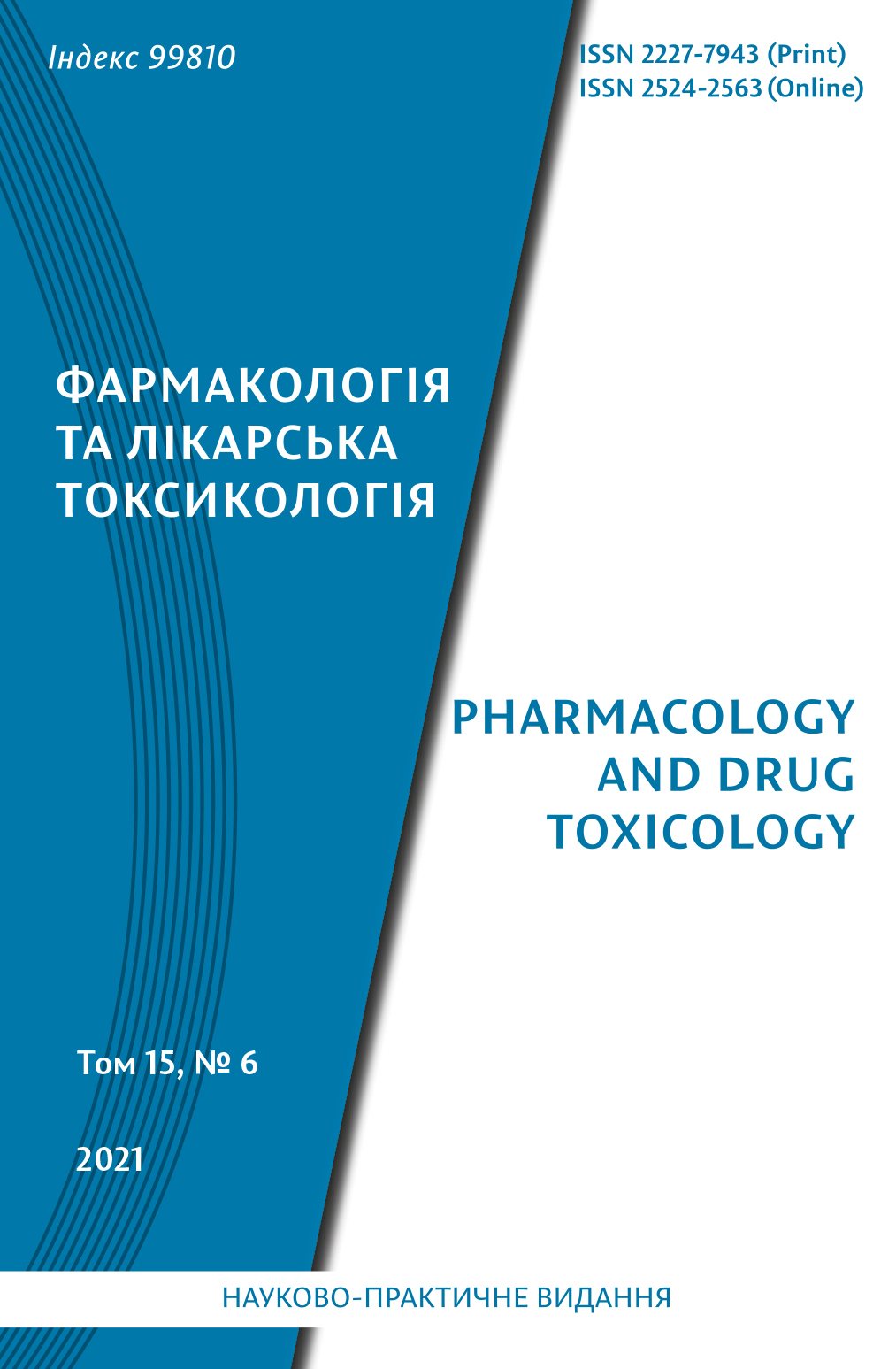Abstract
The aim of the study was to evaluate the effect of 2-(2,4-dioxo-1,4-dihydroquinazolin-3(2H)-yl)-N-[(2,4-dichlorophenyl)methyl]-acetamide on behavioural responses of animals in the combined open field test, levels of anxiety and depressive behaviour, muscle tone and neuromuscular coordination, as well as
to determine the acute toxicity of this compound.
The experiment was performed on 21 non-linear albino mice. The test compound at a dose of 100 mg/kg and the reference drug sodium valproate at a dose of 300 mg/kg were administered intragastrically 30 minutes before testing in a combined open field arena, in an elevated plus maze (anxiolytic effect), in a tail
suspension test (depression-like behavior by immobility criterion), rotarod test (muscle tone and neuromuscular coordination). Acute toxicity was determined by T. V. Pastushenko express method, and 2-(2,4-dioxo-1,4-dihydroquinazolin-3(2H)-yl)-N-[(2,4-dichlorophenyl)methyl]-acetamide was administered at a dose of 5 g/kg intragastrically.
2-(2,4-Dioxo-1,4-dihydroquinazolin-3(2H)-yl)-N-[(2,4-dichlorophenyl)methyl]-acetamide did not change the locomotor and exploratory activity as well as emotional manifestations in the combined open field test, in contrast to sodium valproate, which had a deprimating action. 2-(2,4-dioxo-1,4-dihydroquinazolin-3(2H)-yl)-N-[(2,4-dichlorophenyl) methyl]-acetamide also caused an anxiolytic effect (while sodium valproate did not significantly influence on anxiety), exerted an antidepressant effect (whereas sodium valproate had a depressant effect) and did not impair muscle tone and neuromuscular coordination, which
were worsened under the influence of sodium valproate. 2-(2,4-dioxo-1,4-dihydroquinazolin-3(2H)-yl)-N-[(2,4-dichlorophenyl) methyl]-acetamide at a dose of 5 g/kg did not cause death of animals: it allows this compound to be classified as practically non-toxic (belonging to the V class of toxicity).
Thus, the favourable profile of the central effects of 2-(2,4-dioxo-1,4-dihydroquinazolin-3(2H)-yl)-N-[(2,4-dichlorophenyl)methyl]-acetamide is proved, namely, the anxiolytic and antidepressant properties as well as the absence of the negative influence on the animals behavior during stress reaction under open field test conditions and the absence of the signs of impairment of muscle tone and neuromuscular coordination. The tested compound belongs approximately to the V class of toxicity – practically non-toxic substances.
